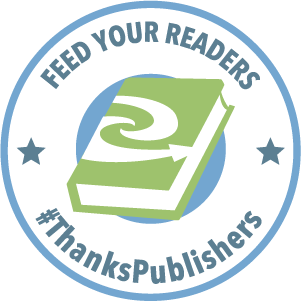A compelling reckoning with the birth of women’s health that illuminates the sacrifices of a young woman who changed the world only to be forgotten by it―until now.
For more than a century, Dr. J. Marion Sims was hailed as the “father of modern gynecology.” He founded a hospital in New York City and had a profitable career treating gentry and royalty in Europe, becoming one of the world’s first celebrity surgeons. Statues were built in his honor, but he wasn’t the hero he had made himself appear to be.
Sims’s greatest medical claim was the result of several years of experimental surgeries―without anesthesia―on a young, enslaved woman known as Anarcha; his so-called cure for obstetric fistula forever altered the path of women’s health.
One medical text after another hailed Anarcha as the embodiment of the pivotal role that Sims played in the history of surgery. Decades later, a groundswell of women objecting to Sims’s legacy celebrated Anarcha as the “mother of gynecology.” Little was known about the woman herself. The written record would have us believe Anarcha disappeared; she did not.
Through tenacious research, J. C. Hallman has unearthed the first evidence of Anarcha’s life that did not come from Sims’s suspect reports. Hallman reveals that after helping to spark a patient-centered model of care that continues to improve women’s lives today, Anarcha lived on as a midwife, nurse, and “doctor woman.”
SAY ANARCHA excavates history, deconstructing the biographical smoke screen of a surgeon who has falsely been enshrined as a medical pioneer and bringing forth a heroic Black woman to her rightful place at the center of the creation story of modern women’s health care.
Thanks to NetGalley and Henry Holt Company for this review copy!
SAY ANARCHA by JC Hallman is a remarkable work that transports readers to the haunting realities of 19th-century America, where the harrowing echoes of enslaved African American women’s lives reverberate through time. This powerful novel delves deep into the forgotten pages of history, weaving a compelling narrative that is as heart-wrenching as it is enlightening.
The story revolves around Anarcha, one of the countless enslaved women subjected to Dr. Marion Sims’ inhumane medical experiments in his quest to perfect the technique of gynecological surgery. a white doctor who is often credited with the invention of modern gynecology.
Drawing inspiration from historical events, the author masterfully combines fact and fiction, bringing the agonizing experiences of Anarcha and her fellow enslaved women to life with vivid prose. Hallman’s writing effortlessly transports readers to the 19th-century Southern United States, immersing them in a world of suffering and hope. This strength was also a weakness to me, as I felt bogged down by all the history. At one point I decided to start skipping over the incredible details and concentrate on Anarcha and the other major characters. These are my thoughts; others may welcome history as a refresher, or as new knowledge.
The book begins with a brief overview of Sims’s life and work. Sims was a brilliant surgeon, but he was also a deeply flawed man who was willing to exploit the most vulnerable members of society in his quest for medical knowledge. In 1846, Sims began performing experimental surgeries on Anarcha, who had suffered a severe vesicovaginal fistula, a condition that causes urine to leak into the vagina. Sims performed these surgeries without anesthesia, and Anarcha endured unimaginable pain and suffering. She eventually died from complications from all her surgeries.
The book is divided into two parts. The first part tells the story of Anarcha’s life, from her childhood in slavery to her years of suffering at the hands of Sims. The second part tells the story of Sims’ rise to fame as the “Father of Gynecology.” Sims’ innovations were built upon the suffering and exploitation of Anarcha and other enslaved women. Hallman weaves a vivid tapestry of historical accounts, immersing readers in the cruel reality faced by Anarcha and countless others, while shedding light on the often-neglected narratives of African American women in history.
Hallman’s book does not shy away from the horrors of Anarcha’s story. He describes in detail the surgeries that Sims performed on her, and he also explores the psychological and emotional toll that these surgeries took on Anarcha. However, Hallman also does a masterful job of humanizing Anarcha. He shows us that she was a complex and resilient woman who was determined to survive and thrive, even in the face of unspeakable cruelty. Despite the horrific abuse she suffered, Anarcha never gave up hope. She continued to fight for her freedom, and she eventually won her release from slavery.
One of the book’s strengths is the author’s ability to blend history with imagination, breathing life into Anarcha and the other characters surrounding her. Hallman’s meticulous research is evident, as he brings to light the horrors of slavery and the atrocities committed in the name of medical progress.
The novel also explores the perspectives of those around Anarcha, including Dr. Sims himself. This multi-dimensional approach adds depth to the narrative, forcing readers to confront the uncomfortable truths about the moral and ethical dilemmas faced by those complicit in perpetuating the system of slavery. The portrayal of Dr. Sims is particularly nuanced, exploring the complexity of his character as both a pioneering surgeon and a morally flawed individual. For all his knowledge, he was extremely self-centered and didn’t even care about women’s health as he was going through medical school! I feel that he did everything solely to make his name known, not out of compassion.
“Say Anarcha” may not be for the faint of heart due to its graphic descriptions of medical procedures and the harsh realities of slavery. Readers should be prepared for an emotionally intense journey that forces them to confront the uncomfortable truths of history.
Want your own copy? You can pick it up here.















Recent Comments